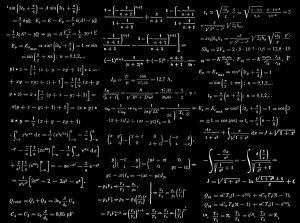How Visualization in Abacus Learning Aids Children with Autism

Introduction
As a parent, you want the best for your child. You want to support their growth, development, and success. However, if your child has autism, you may face unique challenges when it comes to their education, especially in subjects like math. Mathematics can be abstract and challenging for many children, but it can be particularly difficult for autistic kids. Fortunately, there is a powerful tool that can help bridge the gap and unlock their potential: abacus learning.
Abacus learning utilizes the power of visualization to aid children with autism in understanding and excelling in mathematics. The visual and hands-on approach of the abacus aligns well with the learning preferences and developmental needs of many autistic children. In this article, we will explore how visualization in abacus learning aids children with autism by making mathematical concepts more accessible and engaging. We will delve into the key benefits of this approach, providing insights and guidance for parents looking to support their child’s mathematical development.
Concrete Representation of Abstract Concepts
One of the key benefits of visualization in abacus learning for children with autism is the concrete representation of abstract concepts. The abacus turns numbers and operations into tangible, visual forms. This helps autistic children, who often benefit from concrete learning tools, to better grasp abstract math concepts by seeing and manipulating beads on the abacus. Instead of relying solely on numbers or symbols on a page, they can physically interact with the abacus, making math more tangible and real.
Structured and Predictable Learning
Autistic children often thrive in structured and predictable environments. The repetitive, step-by-step nature of abacus training provides a reliable structure that matches their preference for routine and predictability. Each movement of the beads on the abacus is a small step towards solving a larger math problem. This reduces anxiety and supports consistent learning progress. By breaking down complex problems into manageable steps, abacus learning provides a clear roadmap for autistic children to follow, building their confidence and reducing frustration.
Enhanced Concentration and Focus
Visualization exercises in abacus training demand attention and mental imagery, which can improve concentration and extend attention spans in autistic children. The act of visualizing the movement of beads on the abacus requires focused mental effort. As they engage with the abacus, their minds become fully absorbed in the task at hand, allowing them to concentrate for longer periods. This enhanced focus not only benefits their mathematical abilities but can also have positive effects on other areas of their lives.
Improved Memory and Photographic Recall
Regular visualization and memorization of bead patterns can strengthen memory, sometimes even leading to photographic memory. Autistic children often struggle with memory-related tasks, but the repetitive nature of abacus learning helps them develop stronger memory skills. As they practice manipulating the beads on the abacus, they internalize patterns and sequences, making it easier for them to recall these patterns when solving math problems. This improved memory capacity extends beyond mathematics and can contribute to their overall cognitive development.
Development of Fine Motor and Sensory Skills
Manipulating the beads on an abacus engages both visual and tactile senses, helping to improve fine motor skills, hand-eye coordination, and sensory integration – areas where autistic children often need support. The physical act of moving beads back and forth requires precise finger movements, strengthening their fine motor skills. They also develop hand-eye coordination as they visually track the beads and move them accordingly. This multisensory approach to learning can have a positive impact beyond mathematics, supporting their overall development and independence.
Boosted Confidence and Reduced Stress
Success with visual and hands-on tasks builds self-confidence in autistic children. As they master the abacus, solve math problems, and see their progress, their confidence grows. The enjoyable, game-like nature of abacus activities can also reduce stress and make learning more positive for autistic children. The structured approach allows them to build a strong foundation in math, leading to a sense of achievement. This newfound confidence can spill over into other areas of their lives, empowering them to take on new challenges with enthusiasm.
Stimulated Creativity and Imagination
Visualization techniques in abacus learning nurture imagination and creative thinking, which can be particularly beneficial for children with autism who may have strengths in visual learning. Imagining the movement of beads on the abacus allows them to explore different strategies and approaches to problem-solving. The abacus becomes a canvas for their ideas and creativity, fostering their imagination as they develop mathematical skills. This holistic approach to learning math not only aids in their academic development but also stimulates their overall cognitive abilities.
Visualization in Abacus Learning for Children with Autism
|
Benefit |
How Visualization Helps |
|---|---|
|
Concrete understanding |
Makes math concepts tangible and easier to grasp |
|
Structured learning |
Provides routine, predictability, and stepwise mastery |
|
Improved concentration |
Visualization exercises enhance focus and attention span |
|
Memory strengthening |
Memorizing bead patterns boosts memory and recall |
|
Fine motor & sensory development |
Manipulating beads improves coordination and sensory processing |
|
Confidence and stress reduction |
Hands-on success builds self-esteem and reduces learning anxiety |
|
Creativity stimulation |
Encourages imagination and creative problem-solving |
Summing Up
Visualization in abacus learning transforms math into a multi-sensory, structured, and engaging experience for children with autism. The combination of visual and hands-on activities helps them grasp abstract concepts, develop concentration skills, improve memory capabilities, enhance fine motor skills, boost confidence, reduce stress, and stimulate creativity. Abacus learning offers a unique approach to mathematical education that addresses the diverse needs of autistic children.
If you’re a parent looking to support your child’s mathematical development, consider exploring abacus learning programs like SIP Abacus India. SIP Abacus offers world-class skill development programs that aim to unlock the mental potential of children through fun learning methodologies. Their programs focus on developing skills in mathematics and overall cognitive development. By incorporating visualization techniques and the use of the abacus tool, SIP Abacus provides a supportive and effective learning environment for children with autism.
Studies show that children who complete the SIP Abacus program perform significantly better in math and reading at school, often 3-4 years ahead of their peers within 2 years of joining. The program’s unique approach of developing both sides of the brain has proven effective in nurturing children’s academic and overall growth. Give your child the opportunity to excel in math and unlock their full potential with abacus learning.
Remember, every child is unique, and what works for one may not work for another. However, by exploring different educational approaches and embracing the power of visualization in abacus learning, you can provide your child with valuable tools to overcome challenges and thrive academically. With the right support and resources, children with autism can develop their mathematical abilities, enhance cognitive skills, and reach their full potential.



